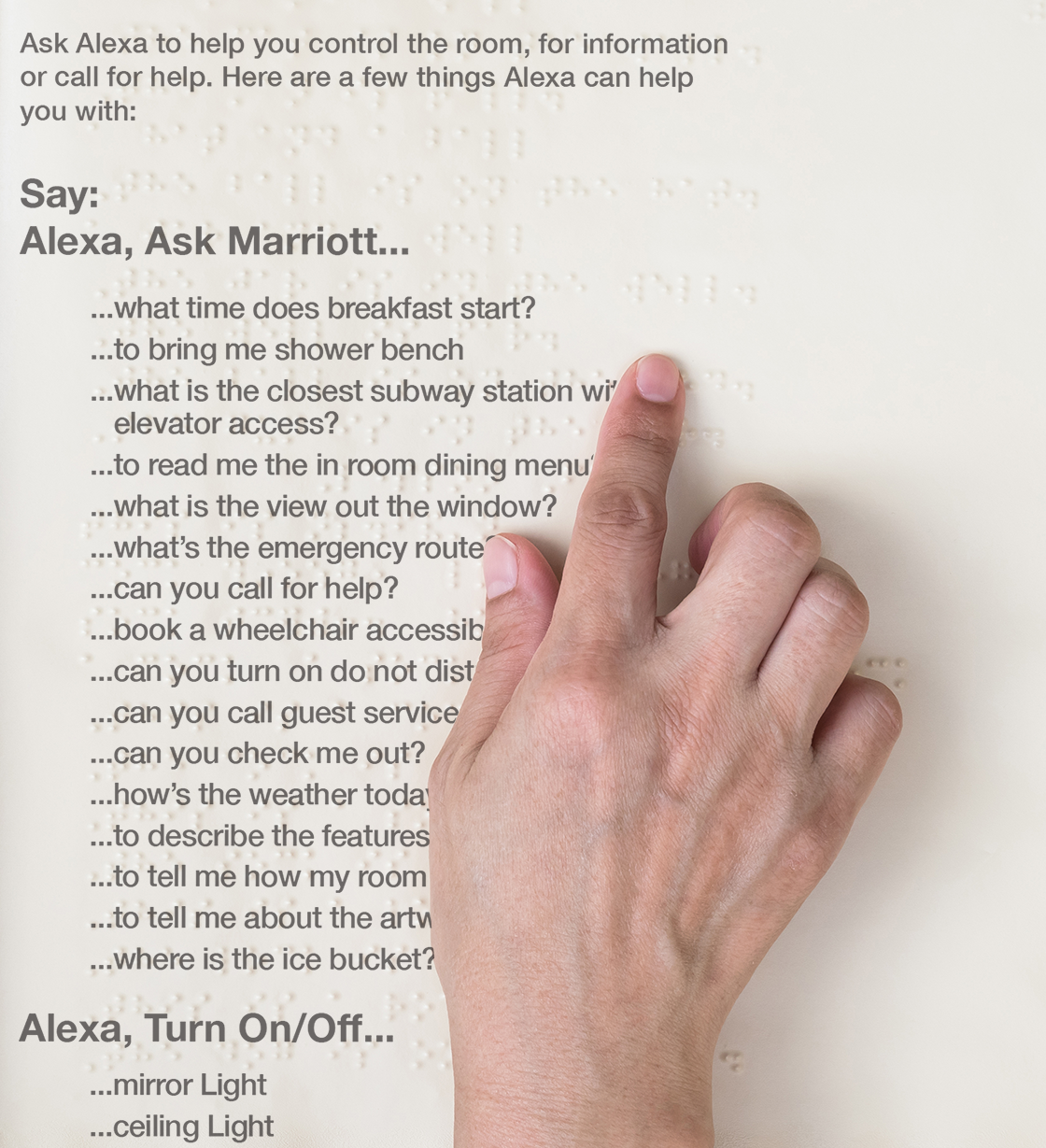
How can technology and inclusive design help
us serve more levels of human abilities?
MARRIOTT INTERNATIONAL
MULTI-SENSORIAL INCLUSIVE DESIGN
Room for All
A hotel experience powered by inclusive design and the IoT technologies.
-
How can inclusive design and technology help mitigate the mismatch between the physical space and an individual's abilities - making the spatial design more accessible to all.
-
We created a prototype hotel room that used technology and Neuroaesthetics design principles to help every guest have a better experience - functionally and emotionally. The room used multiple modes for interaction to allow stronger “senses” to make up for ones that might be missing.
In collaboration with Elise Roy, a renown expert on Inclusive Design.
-
Inclusive Design Research
Design Thinking Workshops
User Interviews
Multi-Modal UX Design (Visual, Audio and Voice Activation)
Environmental Design -
Elise Roy - Inclusive Design Consultant
Robyn Kaminski & Timi Mustapha - Interior Design
Joan Kaufman - Project Manager
Tactile transitions
Use of tactile breaks and contrasting edges between functional surfaces helps guests with no or low visual senses feel more comfortable in the bathroom where they are more likely to be without assist.
“This isn’t just about accessibility. It’s about a business necessity. When we look for gaps of exclusion, we identify opportunities for great change that ensures you stay ahead of the innovation curve, adding exceptional value that you will not find anywhere else.”
— Elise Roy, Inclusive Design Expert
SME collaboration
Throughout the design process Elise Roy, an inclusive design expert helped us better understand how we can design for different levels of human abilities.
Click here to watch her TEDx talk on inclusive design.
Related Projects
Neuroaesthetics
Frog Design
Designing with Heart ❤️
Blog Article
IoT Guestroom of the Future
Marriott International




